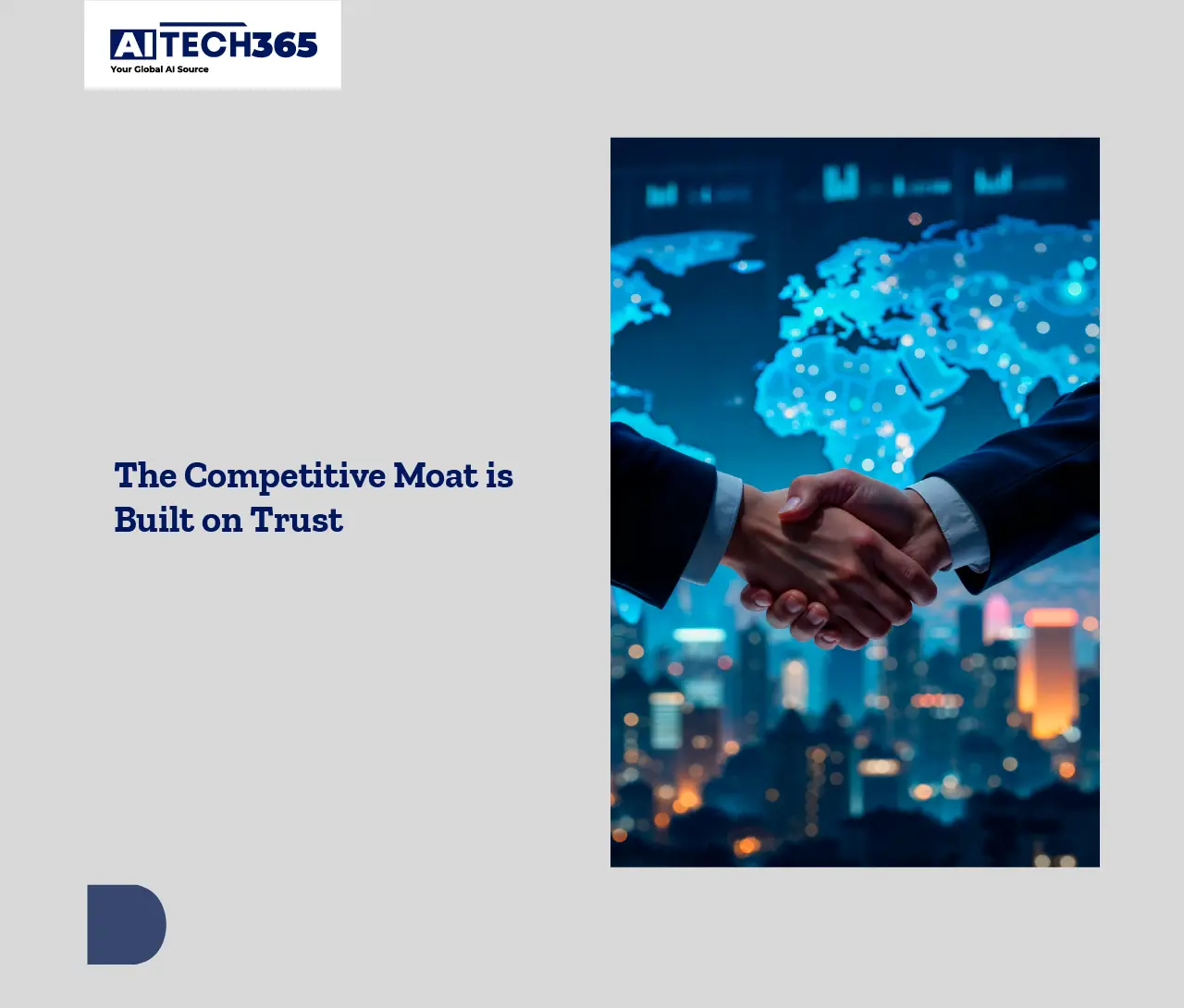For years, third-party risk management (TPRM) in technology felt like a necessary evil. A checkbox exercise is needed by compliance teams. Auditors push for it, and many view it as a hurdle that slows innovation. Procurement teams checked vendors. Legal teams wrote contracts. Security teams searched for weaknesses. Each group worked alone, mainly trying to prevent problems. The goal was simple: prevent the next big breach or regulatory fine. In the fast-paced world of AI, just reacting and following rules isn’t enough. It is a strategic risk. For AI tech leaders and CTOs, a fundamental shift is imperative. It’s time to see that smart, proactive TPRM isn’t just for defense. It’s a strong engine for gaining an edge, building trust, and speeding up growth.
A Web of Inherent Risk and Opportunity
AI development today relies on collaboration and many third parties. Consider the dependencies:
- Foundation Models & APIs: Use giants like OpenAI, Anthropic, and Meta. You can also choose specialized niche providers.
- Cloud Infrastructure: Building on AWS, Azure, GCP, or specialized AI clouds.
- Data Suppliers & Labelers: Sourcing critical training data and annotation services.
- Specialized Tooling: Utilizing platforms for MLOps, model monitoring, bias detection, and security.
- Integration Partners: Connecting AI capabilities into broader enterprise systems.
Every node in this network brings risk. These risks include:
- Vulnerabilities in the software supply chain.
- Data privacy violations from upstream sources.
- Biased outputs due to flawed training data.
- Intellectual property leakage.
- Model poisoning.
- Service disruptions.
- Evolving regulatory issues, like GDPR, CCPA, and the EU AI Act.
According to a 2023 SecurityScorecard report, 81% of organizations experienced cybersecurity incidents originating from third-party vulnerabilities. A failure in this chain affects your product, brand, and profits directly.
The traditional ‘audit once a year’ model crumbles under this complexity and pace. AI models change quickly. Data flows are always moving. The threat landscape shifts every day. Compliance alone provides a false sense of security. It’s like checking a rocket’s structure only during design. You ignore the stress from launch and flight.
Reframing TPRM
AI companies are breaking down the old compliance barriers. They are making third-party risk management (TPRM) a key part of their strategy. Now, TPRM works closely with engineering, product, and marketing teams. This shift highlights an important truth: strong vendor risk management builds customer trust. It also boosts market credibility and allows for quick, secure actions.
- Building Trust and Closing Major Deals: Buyers in regulated fields, such as finance, healthcare, and critical infrastructure, understand AI risks very well. Their procurement processes now carefully check your security stance and that of your vendors. They demand transparency. Can you confidently answer:
- Where does your core model originate, and how is it secured?
- How is your training data sourced and vetted for bias and privacy?
- What are the disaster recovery and continuity plans of your cloud provider?
- How do your data labeling partners ensure quality and ethical practices?
- Can you provide evidence of ongoing risk assessments for key vendors?
Companies that give clear, documented, and proactive answers to these questions stand out. They demonstrate maturity, responsibility, and a genuine commitment to secure and ethical AI. It’s not just about filling out a security questionnaire. It’s about showing a culture that cares about risk awareness. According to Gartner, by 2025, 60% of enterprises will treat third-party risk posture as a top factor in AI vendor selection. A major financial institution recently stated that choosing an AI vendor for customer service involves more than just model accuracy. They also valued the vendor’s TPRM program. This was especially true for how the vendor managed data providers and model hosting. The vendor with the superior risk posture won the multi-million-dollar deal.
- Accelerating Go-to-Market (GTM): A strong TPRM framework speeds up the process instead of slowing it down. How?
- Streamlined Procurement: A pre-vetted vendor catalog lets product teams choose from reliable, low-risk partners. This way, they can skip long security reviews for each new tool or service.
- Faster Security & Compliance Approval: Involving TPRM early in vendor selection helps identify red flags quickly. This prevents last-minute issues during security checks or compliance audits before a big product launch. Continuous monitoring means fewer nasty surprises.
- Reduced Integration Friction: Understanding a vendor’s security controls, APIs, and data handling helps avoid rework and delays during integration.
- Stronger Resilience: Knowing your key vendors have strong BC/DR plans reduces the risk of sudden outages. This helps keep your launch on schedule and protects customer SLAs after launch.
Imagine building a highway with guardrails and clear signs. It’s much safer than trying to cross a dangerous mountain pass. The highway allows for faster, safer travel. A leading AI analytics startup shortened its sales cycle. According to a research, 87% of organizations say the primary objective of their TPRM program is to reduce risk exposure. They did this by including a ‘Vendor Risk Posture’ summary in their RFP responses. This summary comes from their TPRM platform. It helped avoid weeks of security questions.
- Protecting Brand Reputation and Cutting Costs: A third-party AI failure can result in huge expenses, far exceeding regulatory fines. Imagine the fallout:
- A data breach via a vulnerable component in an open-source library used by your model.
- Biased loan decisions traced back to flawed demographic data purchased from a supplier.
- A key tool for diagnosing critical patients is failing. This is due to its cloud inference service experiencing a long outage.
- Sensitive proprietary model architecture leaking via a compromised MLOps platform.
Reputational damage can be severe. It leads to loss of customer trust, lawsuits, and a drop in market value. These effects can threaten the very existence of a business. Proactive TPRM is your insurance policy against these scenarios. It’s far cheaper and more effective to prevent the fire than to battle the blaze. Consider the case of a pharmaceutical company leveraging AI for drug discovery. A breach in a third-party data provider’s system held sensitive research data. This not only delayed a key trial but also caused a big drop in stock prices and led to a regulatory investigation. Their AI partner didn’t cause the security issue. However, it still suffered reputational damage by association.
Building a Strategic TPRM Advantage
Moving from compliance chore to competitive weapon requires a deliberate strategy:
- Leadership buy-in is key. The CTO and CEO should see TPRM as a strategic priority. It’s not just a back-office task. Embed risk awareness into the engineering and product DNA. Secure and responsible AI is essential for market success. It must be built on a trustworthy foundation, and that is non-negotiable.
- Continuous, Risk-Based Assessment: Ditch the annual questionnaire. Use continuous monitoring tools to check vendor security, financial health, compliance, and service performance in near real-time. Prioritize vendors by their importance and access to sensitive data or systems. For example, Tier 1 vendors need in-depth reviews. In contrast, Tier 3 vendors may need less oversight.
Use automation for:
- vulnerability scanning
- compliance checks
- threat intelligence feeds for your vendors.
- Deep Technical Due Diligence: Go beyond policy documents. For critical vendors (especially model providers, data suppliers, core infrastructure):
- Request proof of secure development practices. For example, check if they follow frameworks like NIST SSDF or OWASP for AI.
- Understand their data lineage and provenance practices.
- Assess their model security controls (evasion, extraction, poisoning resistance).
- Scrutinize their own third-party dependencies (your risk extends to their vendors!).
- Require clear Software Bills of Materials (SBOMs) and more frequent AI Bills of Materials (AIBOMs). These ensure transparency about components and data.
- Contract as Control: Ensure contracts with key vendors clearly outline security, privacy, ethical AI, and resilience needs.
- Include strong SLAs.
- Add audit rights.
- Specify data ownership clauses.
- Set breach notification timelines.
- Define clear liability terms.
Negotiate the right to terminate for material breaches of security or ethical standards.
- Integration & Lifecycle Management: TPRM isn’t a one-time event. Integrate vendor risk assessment into your Software Development Lifecycle (SDLC) and MLOps pipelines. Continuously monitor performance and risk signals throughout the engagement. Set clear offboarding steps to safely end access and data when a vendor relationship ends.
- Transparency as a Trust Catalyst: Don’t hide your TPRM rigor, communicate it. Develop clear, concise summaries of your approach for customers and prospects. Consider publishing high-level principles or frameworks (where appropriate). Proactive transparency builds immense credibility. Companies like Anthropic are sharing detailed model cards and safety frameworks. This sets a new standard for openness and builds trust.
The Competitive Moat is Built on Trust
In the crowded and often mistrustful AI marketplace, differentiation is paramount. New algorithms and impressive demos grab our attention. Still, real success relies on reliability, security, and ethical responsibility. Mastering your extended ecosystem with great TPRM shows you understand the stakes.
This isn’t just about avoiding disaster; it’s about enabling audacious innovation with confidence. It’s about moving faster than competitors because your foundation is secure. It’s about winning deals that others miss. You do this because you understand enterprise risk well. It’s about building a brand synonymous with responsible and resilient AI.
For the AI CTO, making TPRM a key part of your competitive strategy is a must, not just a compliance checklist. It’s a key investment for creating a sustainable, trusted, and strong future in AI. Companies that see this shift now won’t just survive the AI ecosystem. They will shape it and thrive. This will turn third-party risk management into a real market advantage. The future belongs to those who build trust within their own teams and across the complex network of modern artificial intelligence.


